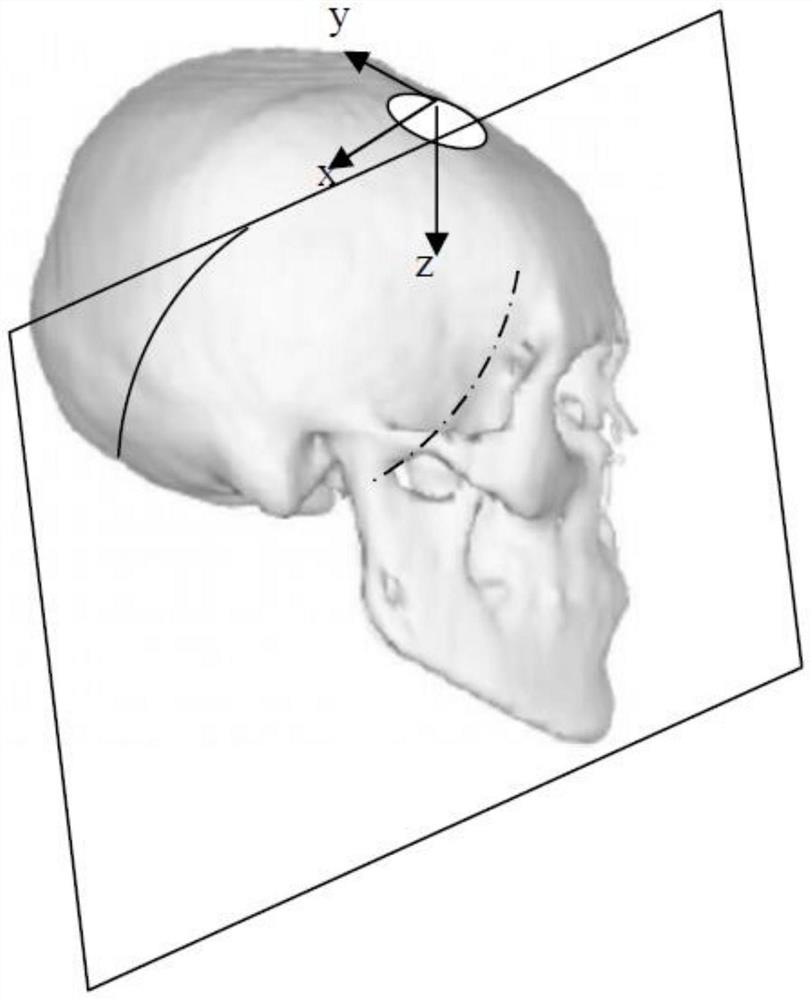Method for automatically detecting and displaying ultrasonic craniocerebral abnormal region
An abnormal area, automatic detection technology, applied in image data processing, instruments, calculations, etc., can solve the problems of complex brain ultrasound images, and achieve the effect of improving the accuracy.
- Summary
- Abstract
- Description
- Claims
- Application Information
AI Technical Summary
Problems solved by technology
Method used
Image
Examples
Embodiment 1
[0017] Embodiment 1, a method for automatic detection and display of abnormal brain regions by ultrasound, comprising the following steps:
[0018] S01. Construct the curved surface model of the cranium first, and construct the curved surface model of the cranium according to the ultrasonic images obtained by the ultrasonic scanning of the cranium.
[0019] S02. Perform cranial edge detection on the 2D ultrasonic image obtained by ultrasonic scanning of the cranium to obtain a cranial edge curve of the 2D image.
[0020] S03. Fitting the cranial edge curve of the 2D image obtained in step S02 with the cranial surface model obtained in step S01 to determine the position of the 2D image on the cranial surface model.
[0021] S04. According to the position of the 2D image obtained in step S03 on the curved skull model, it is judged whether the 2D image is symmetrical with respect to the midsagittal plane or the median coronal plane of the curved skull model.
[0022] S05. Mark t...
Embodiment 2
[0027] Embodiment 2, a method for automatic detection and display of ultrasonic brain abnormalities, comprising the following steps:
[0028] S01. Construct the curved surface model of the cranium first, and construct the curved surface model of the cranium according to the ultrasonic images obtained by ultrasonic scanning of the cranium.
[0029] S02. Perform cranial edge detection on the 2D ultrasonic image obtained by ultrasonic scanning of the cranium to obtain a cranial edge curve of the 2D image.
[0030] S03. Fitting the cranial edge curve of the 2D image obtained in step S02 with the cranial surface model obtained in step S01 to determine the position of the 2D image on the cranial surface model.
[0031] S04. According to the position of the 2D image obtained in step S03 on the curved skull model, it is judged whether the 2D image is symmetrical with respect to the midsagittal plane or the median coronal plane of the curved skull model.
[0032] S05. Mark the 2D imag...
PUM
 Login to View More
Login to View More Abstract
Description
Claims
Application Information
 Login to View More
Login to View More - R&D
- Intellectual Property
- Life Sciences
- Materials
- Tech Scout
- Unparalleled Data Quality
- Higher Quality Content
- 60% Fewer Hallucinations
Browse by: Latest US Patents, China's latest patents, Technical Efficacy Thesaurus, Application Domain, Technology Topic, Popular Technical Reports.
© 2025 PatSnap. All rights reserved.Legal|Privacy policy|Modern Slavery Act Transparency Statement|Sitemap|About US| Contact US: help@patsnap.com

